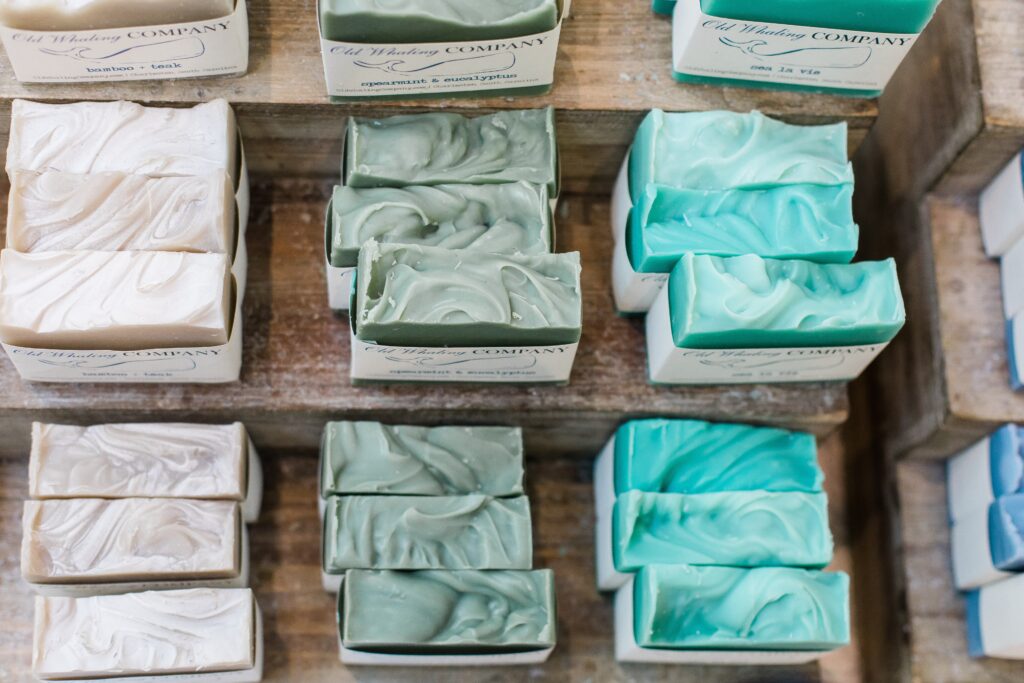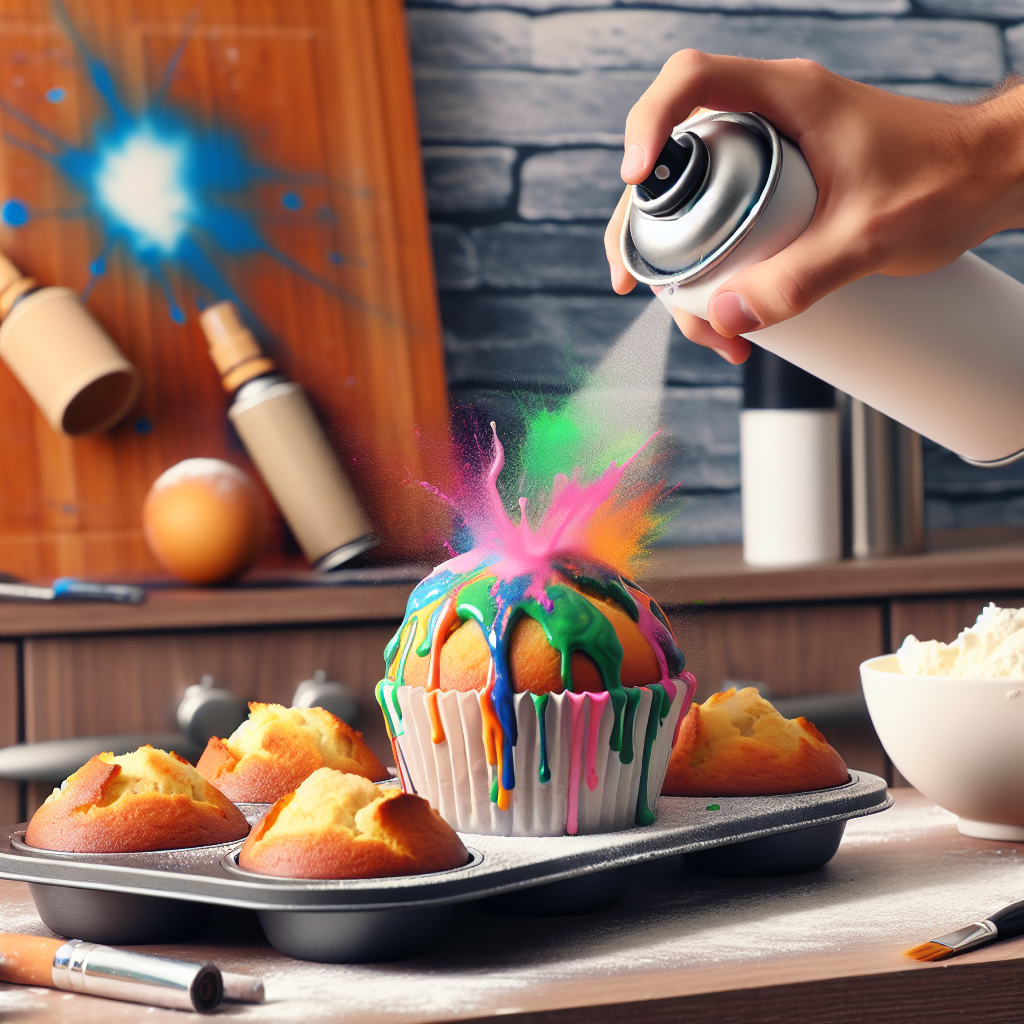Spray paint is a common household item used for various art and DIY projects, but have you ever wondered if you can take its versatility to the next level by baking it? In this article, we will explore the intriguing possibility of baking spray paint and discuss the potential benefits and risks associated with this unconventional technique. By delving into the science behind the baking process and examining the effects it has on spray paint, we aim to provide you with a comprehensive understanding of whether baking this art medium is a viable option for artists and craft enthusiasts alike.
Overview of spray paint
Spray paint is a versatile and popular painting medium that allows for easy and efficient application. It consists of a pressurized canister that contains a liquid paint formula, which is released as a fine mist through a nozzle when the valve is depressed. This method of application allows for even coverage and precise control over the paint distribution. Spray paint is commonly used in various industries, including automotive, graffiti, and DIY projects.
Definition of spray paint
Spray paint is a type of paint that is aerosolized and applied as a mist using a canister. It is composed of solvents, pigments, binders, and propellants. The solvents help suspend the pigments and binders, while the propellants assist in dispensing the paint in a mist form. This formulation allows for quick drying and an even coating on various surfaces.
Components and types of spray paint
Spray paint is composed of several key components. Solvents are used to dissolve the pigments and binders, creating a liquid consistency. Pigments provide color and opacity to the paint, while binders help hold the pigments together and adhere them to the surface. Propellants, such as compressed air or liquefied gas, propel the paint out of the canister.
There are different types of spray paint available, each with its own unique properties and applications. Acrylic spray paint, for example, is versatile and dries quickly, making it suitable for a wide range of surfaces. Enamel spray paint offers durability and a glossy finish, making it popular for automotive and industrial applications. Other types include metallic, fluorescent, and specialty finishes.
Common uses of spray paint
Spray paint is widely used for various purposes due to its convenience and versatility. In automotive applications, it is often used for touching up minor scratches or applying a fresh coat of paint. Graffiti artists use spray paint to create vibrant and intricate murals. DIY enthusiasts utilize spray paint for home improvement projects, such as furniture refinishing or creating decorative accents. It is also commonly used in industrial settings for painting equipment, machinery, and metal surfaces.
Properties of spray paint
Understanding the properties of spray paint can help ensure successful and long-lasting results. Several factors, including the drying process, texture and finish options, as well as adhesion and durability, play a crucial role in the overall performance of spray paint.
Drying process of spray paint
The drying process of spray paint varies depending on the type and brand. Generally, spray paint dries quite rapidly compared to traditional brush-on paint. This is due to the solvents in the paint that evaporate quickly, leaving behind a dry and hardened paint film. Depending on the environmental conditions, most spray paints will dry to the touch within a matter of minutes.
Texture and finish options
Spray paint offers a range of texture and finish options to suit different preferences and applications. Matte finish paint provides a non-glossy, smooth surface, while satin finish offers a soft sheen. For a glossy and reflective appearance, high-gloss finishes are available. Some spray paints also offer textured finishes, such as stone or metallic effects, to add depth and dimension to the painted surface.
Adhesion and durability
Adhesion is a critical property of spray paint to ensure that it adheres well to the surface and does not peel or chip easily. Proper surface preparation, including cleaning and sanding, helps promote good adhesion. Additionally, certain spray paints are specifically designed for improved adhesion on challenging surfaces such as plastic, metal, or glass.
Durability is another essential consideration. The durability of spray paint depends on factors such as the type of paint, the quality of the formulation, and the application technique. For outdoor applications or areas prone to high wear and tear, selecting a spray paint specifically designed for durability is recommended.

This image is property of images.unsplash.com.
Baking as a technique
Introduction to baking
Baking, in the context of spray painting, refers to a technique where the painted object is subjected to controlled heat to accelerate the drying and curing process. This technique is commonly used in automotive painting, allowing for quicker turnaround times and enhanced paint finish.
Purpose of baking in painting
The purpose of baking is to speed up the drying and hardening of the paint, promoting better adhesion and durability. Heat helps evaporate the solvents in the paint more rapidly, reducing the overall drying time. Baking also enhances the cross-linking of the binders in the paint, resulting in a stronger and more resistant paint film.
Suitability for different materials
Baking as a technique is most commonly used on surfaces and materials that can withstand high temperatures. Automotive parts made of metal, such as car panels or rims, are often suitable for baking due to their heat resistance. However, it is important to consider the material’s specific temperature limits and potential reactions to heat before proceeding with the baking process.
Baking spray paint
Advantages and drawbacks
Baking spray paint offers several advantages, but it is important to consider the drawbacks as well. One of the significant advantages is the accelerated drying time, allowing for faster project completion. The heat from baking also helps create a more durable and resistant finish compared to air drying. However, the primary drawback is the limited suitability for certain materials that cannot withstand high temperatures. Additionally, caution must be exercised to avoid overheating the paint, which can lead to discoloration or other undesirable effects.
Types of spray paint suitable for baking
Not all types of spray paint are suitable for baking. It is essential to choose a spray paint specifically labeled as “heat resistant” or “able to be baked” to ensure successful results. These specialty spray paints are formulated to withstand the higher temperatures involved in the baking process without compromising the finish or integrity of the paint film. It is crucial to carefully read the manufacturer’s instructions and labels for specific information regarding baking suitability.
Recommended baking temperatures and times
The recommended baking temperatures and times vary depending on the type of spray paint used. It is crucial to follow the instructions provided by the manufacturer to ensure optimal results. Generally, baking temperatures for spray paint range from 150 to 200 degrees Fahrenheit (65 to 93 degrees Celsius), and the duration can range from 30 minutes to a few hours. Proper temperature control and monitoring are essential to prevent overheating and potential damage to the painted object.

This image is property of images.unsplash.com.
Preparing the surface
Before applying spray paint, proper surface preparation is necessary to achieve a smooth and long-lasting finish. The steps involved in surface preparation include cleaning and sanding, surface priming, and additional pre-baking steps when applicable.
Cleaning and sanding
Cleaning the surface is essential to remove any dirt, grease, or contaminants that can affect the adhesion of the spray paint. Using a mild detergent or a suitable surface cleaner, thoroughly clean the surface and rinse it with water. Once the surface is dry, sanding can be performed to create a roughened texture that promotes better adhesion. Use sandpaper or a sanding block to gently sand the surface, ensuring a smooth, clean, and slightly roughened finish.
Surface priming
Priming the surface before applying spray paint can help improve adhesion, enhance paint durability, and prevent potential issues such as paint peeling or chipping. Choose a primer specifically formulated for the material being painted and apply a thin and even coat. Allow the primer to dry completely before proceeding with the application of spray paint.
Additional pre-baking steps
When utilizing the baking technique, it is important to consider any additional pre-baking steps recommended by the spray paint manufacturer. These steps may include specific surface treatments or priming techniques to ensure optimal results when subjected to heat. Carefully review the manufacturer’s instructions to determine if any additional steps are necessary before moving on to the spray painting process.
Applying spray paint
The application of spray paint plays a significant role in achieving a smooth and professional finish. Several factors, including spray painting techniques, layering and drying times, and tips for an even coating, contribute to successful spray paint application.
Spray painting techniques
When applying spray paint, it is crucial to use the appropriate technique to achieve an even and consistent coat. Hold the canister approximately 6-8 inches away from the surface and spray in smooth and sweeping motions. Keep the can in constant motion to prevent paint buildup in a single area and ensure a seamless finish. It is recommended to practice on a scrap surface before spray painting the final object to get familiar with the technique and achieve the desired effect.
Layering and drying times
Achieving the desired coverage and color intensity often requires multiple layers of spray paint. After each application, allow the paint to dry according to the manufacturer’s guidelines before adding additional layers. The drying time can vary depending on factors such as temperature, humidity, and the type of spray paint used. Patience is key to avoid disturbing the previous layers and achieve a smooth and flawless paint finish.
Tips for an even coating
To achieve an even coating of spray paint, it is important to consider a few helpful tips. Start with thin and light coats, gradually building up the desired coverage. This helps prevent drips, sags, or uneven paint distribution. Applying the paint in multiple passes, rather than one heavy application, also aids in achieving an even finish. Additionally, maintaining a consistent distance and speed while spray painting contributes to a uniform coating without patchiness.

This image is property of images.unsplash.com.
Baking process
When utilizing the baking technique for spray paint, it is crucial to follow proper safety precautions and select an appropriate oven or heat source. Proper placement and positioning of the painted object also play a vital role in the baking process.
Safety precautions
Baking spray paint requires careful attention to safety measures to prevent accidents or injuries. Ensure proper ventilation in the baking area to avoid inhalation of fumes. It is advisable to wear personal protective equipment, such as gloves and goggles, to protect the skin and eyes. Avoid exposing flammable or combustible materials to the heat source and closely monitor the baking process to minimize risks.
Oven or heat source selection
Selecting an appropriate oven or heat source is critical to the success of the baking process. If using an oven, ensure it is a dedicated baking oven or one that can be cleaned thoroughly of any potential paint residue. Set the oven to the recommended baking temperature specified by the spray paint manufacturer. If using an alternative heat source, such as heat lamps or infrared heaters, ensure they are suitable for the size and shape of the painted object and can provide consistent and even heat distribution.
Proper placement and positioning
The proper placement and positioning of the painted object during the baking process can impact the final result. Ensure that the object is placed on a clean and heat-resistant surface, such as a baking tray or wire rack, to prevent any undesirable reactions or damage. The object should be positioned in such a way that it receives even heat exposure from all sides, ensuring uniform drying and curing.
Baking duration and temperature
Determining the proper baking duration and temperature is crucial to avoid any adverse effects on the paint and painted object. Temperature plays a significant role in the drying and curing process, and exceeding the recommended temperature can lead to paint damage or discoloration.
Effects of temperature on paint
Temperature affects the drying and curing properties of spray paint. Higher temperatures can accelerate the drying process but should be carefully regulated to prevent overheating. Excessive heat can cause the paint to bubble, blister, or become discolored, resulting in an unsatisfactory finish. Following the recommended baking temperature specified by the spray paint manufacturer is essential to achieve optimal results.
Determining proper baking times
The proper baking time varies depending on factors such as the type of spray paint, thickness of the paint layers, and the size of the object being baked. It is crucial to follow the manufacturer’s instructions regarding baking times to ensure that the paint is adequately dried and cured. Under-baking can result in a soft and easily damaged finish, while over-baking can lead to paint damage or other undesirable effects.
Avoiding overheating and paint damage
To avoid overheating and potential paint damage, it is important to monitor the baking process closely. Use an oven thermometer to ensure the accuracy of the temperature settings. Regularly check the painted object for any signs of discoloration or surface irregularities. If at any point the paint appears to be overheating or showing signs of damage, discontinue the baking process immediately and seek an alternative solution.

Post-baking considerations
After the baking process, certain considerations should be kept in mind to ensure the best possible outcome. Cooling and curing, potential risks and precautions, as well as finishing touches and protective coatings, are crucial elements to address.
Cooling and curing
After the baking process, it is essential to allow the painted object to cool and cure completely. This ensures that the paint has fully dried, hardened, and adhered to the surface. Cooling times can vary depending on the size and thickness of the object, as well as the ambient temperature. Rushing the cooling process can lead to premature handling or application of coatings, resulting in potential damage to the paint finish.
Potential risks and precautions
While baking spray paint can yield excellent results, it is important to be aware of potential risks and take necessary precautions. If not properly executed, the baking process can cause paint damage, discoloration, or even fire hazards. Always follow the manufacturer’s instructions carefully and exercise caution throughout the baking process. If unsure about any aspect of the process, consult a professional or seek guidance from knowledgeable sources.
Finishing touches and protective coatings
Once the painted object has cooled and cured, it is recommended to apply any desired finishing touches or protective coatings. This can include clear coats, varnishes, or waxes that provide added protection, enhance the appearance, and prolong the lifespan of the paint finish. Follow the manufacturer’s guidelines for the specific coating product and consider any additional steps necessary, such as sanding or buffing, to achieve the desired result.
Alternatives to baking
While baking can be an effective technique for speeding up the drying and curing process of spray paint, there are alternative methods that can be employed if baking is not feasible or suitable for the project at hand.
Air drying
Air drying is the traditional method of allowing the paint to dry at ambient room temperature without the aid of external heat sources. This method is suitable for projects that do not require accelerated drying and curing times. Keep in mind that air drying usually takes longer compared to baking, and environmental factors such as temperature and humidity can affect the drying process. Proper ventilation is crucial to ensure a thorough and even drying of the paint.
Curing with heat guns
Heat guns can be used as an alternative to baking for smaller objects or localized paint areas. A heat gun is a handheld device that emits a controlled stream of hot air. By aiming the heat gun at the painted surface, it can help accelerate the drying and curing process. However, caution must be exercised to prevent overheating or scorching of the paint. Proper technique and continuous movement are essential to achieve even heat distribution and avoid any potential damage.
Professional paint drying techniques
For larger projects or those requiring specialized drying techniques, it may be beneficial to consult with professional paint drying services. These services utilize specialized equipment and controlled environments to ensure optimal drying and curing conditions for the paint. Professional drying techniques are especially useful for projects with strict time constraints or complex surfaces that require expert knowledge and equipment.
In conclusion, spray paint is a versatile and popular medium that offers convenient application and a wide range of possibilities. Understanding the properties of spray paint, such as drying process, texture options, and adhesion, is crucial for successful results. Baking spray paint can accelerate the drying and curing process, providing a durable and professional finish. However, careful consideration should be given to suitable materials, proper surface preparation, and adherence to safety precautions. Alternatives to baking, such as air drying or heat guns, can be explored when baking is not feasible or desired. By following established techniques and guidelines, spray painting with the added option of baking can yield exceptional results in various projects.




